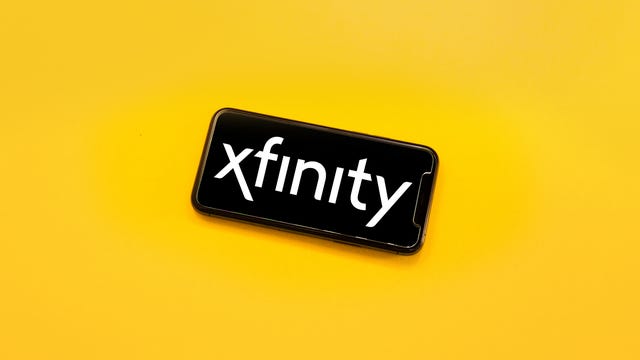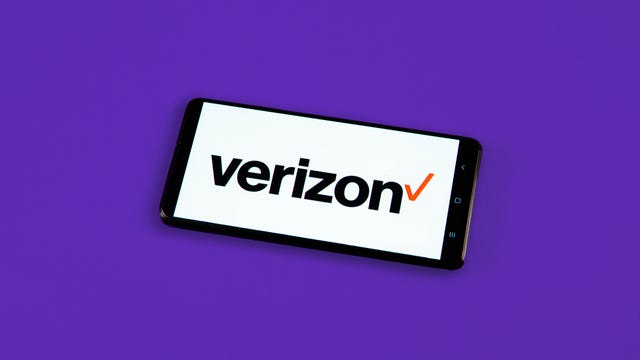In this article:
Whether you’re moving to the Mid-Atlantic or Northeast for the first time or just searching for better internet service at your current address, chances are you’ll have the choice of Comcast Xfinity or Verizon Fios. The good news is both providers are decent options for home internet with fast speeds, fair pricing and agreeable service terms.
Xfinity has a slight advantage over Verizon Fios when it comes to promotional pricing and gigabit download speeds, but Verizon Fios can be the better long-term internet deal. Stable pricing, not to mention the speed and reliability of a 100% fiber connection, have helped Verizon Fios land the top spot for customer satisfaction in recent years.
So which provider, Xfinity or Verizon Fios, is best for your home? Below, we’ll take a look at how the two providers stack up, from speeds and price tiers to coverage maps and customer satisfaction.
Verizon Fios vs. Xfinity: Speeds and connection types
From fiber to satellite, dial-up to DSL, there are lots of different ways for ISPs to get internet connectivity into people’s homes. While a lot of internet providers employ a mix of methods as needed to get as many people online as possible, most focus on one main technology for a majority of customers. For instance, Comcast’s Xfinity internet service specializes in cable internet, which carries your web traffic along the same copper coaxial wiring that delivers cable TV into people’s homes. That’s no surprise — along with being an internet juggernaut, Comcast is one of the biggest cable TV providers in the US.
Cable internet doesn’t have the same speed potential as fiber internet, but it’s still quite capable of delivering a high-speed connection. In fact, Xfinity offers faster max download speeds than many competing cable internet providers. “As of January 2021, Comcast upgraded its Xfinity Gigabit Internet speed to provide 1.2Gbps (1,200Mbps),” a Comcast spokesperson told us last year. “Xfinity Gigabit Internet is available to 99-plus percent of its footprint.”
Per the FCC, faster fiber hookups account for the other 4% of Xfinity subscribers. Comcast says that this number is on the rise, as well. In November of 2021, the company announced top speeds as high as 3Gbps for customers across the nation, and later doubled that to 6Gbps. But again, your home will need to be wired for fiber in order to hit speeds like those.
Upload speeds tell a different story
While Xfinity offers fast downloads, upload speeds with those 1.2Gbps cable plans typically top out at around 35Mbps, which is roughly the bare minimum for HD video conferencing. Lower-tier plans offer even less. For instance, if you subscribe to Xfinity’s Fast plan with download speeds of 400Mbps, your accompanying upload speeds will be capped at just 10Mbps. And no, Comcast isn’t close to clear about this shortcoming on its website, or in any of its advertising for Xfinity service.
Faster upload speeds do seem to be in the works, but it’s unclear when a majority of Xfinity customers should expect to benefit from them.
“Over the years, we have consistently increased both upstream and downstream speeds,” a Comcast spokesperson says, while also pointing to an in-house report showing that downstream traffic was roughly 14 times higher than upstream traffic in 2020.
“We continue to evaluate usage, but nothing to announce about increases to our upstream speeds at this time,” the spokesperson added.
Comcast Xfinity internet plans (Northeast region)
| Plan | Max speeds | Two-year rate with autopay | Standard rate with autopay | Equipment fee | Data cap | Term agreement |
|---|---|---|---|---|---|---|
| Connect More | 200Mbps download, 10Mbps upload | $25 | $77 | Included | No | None |
| Fast | 400Mbps download, 10Mbps upload | $35 | $92 | $14 gateway rental (skippable) | No | None |
| Superfast | 800Mbps download, 15Mbps upload | $60 | $97 | $14 gateway rental (skippable) | No | None |
| Gigabit | 1,000Mbps download, 20Mbps upload | $70 | $102 | $14 gateway rental (skippable) | No | None |
| Gigabit Extra | 1,200Mbps download, 35Mbps upload | $80 | $107 | $14 gateway rental (skippable) | No | None |
| Gigabit Pro | 6,000Mbps download, 6,000Mbps upload | $300 | $300 | $25 gateway rental (required) | No | 2 years |
Verizon Fios home internet plans
| Plan | Max speeds | Regular monthly price | Monthly equipment fee | Data cap | Contract |
|---|---|---|---|---|---|
| Fios 300 | 300Mbps download, 300Mbps upload | $50 | None | None | None |
| Fios 500 | 500Mbps download, 500Mbps upload | $70 | None | None | None |
| Fios Gigabit Connection | 940Mbps download, 880Mbps upload | $90 | None | None | None |
Fiber is much better than cable at handling uploads, so Verizon Fios customers can expect high upload speeds that match their download speeds, or that come close. For instance, that top-tier 940Mbps plan comes with upload speeds of up to 880Mbps.
Outside of Fios fiber-optic service, the rest of Verizon’s wired internet customer base gets its connection from Verizon via DSL, which the FCC lists as available to 65% of subscribers at much slower download speeds ranging from 1.1 to 15Mbps.
Verizon also notes its growing 5G and LTE home internet service, which leverages the company’s cellular towers to beam internet connections directly into peoples’ homes. In mid-January, 5G Home service expanded to approximately 900 cities, which brings the availability of Verizon 5G Home Internet to a total of over 30 million households across the US.
“Our expansion of 5G Home … will continue throughout the year,” a Verizon spokesperson said.
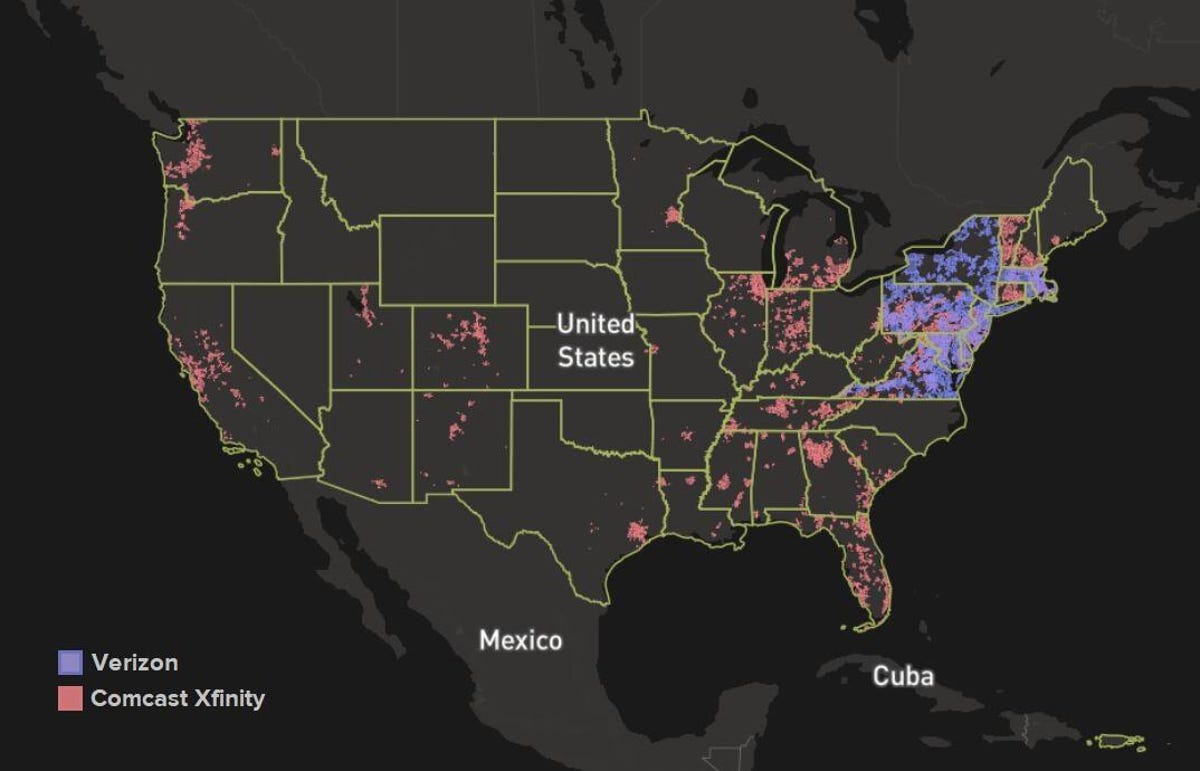
Enlarge Image
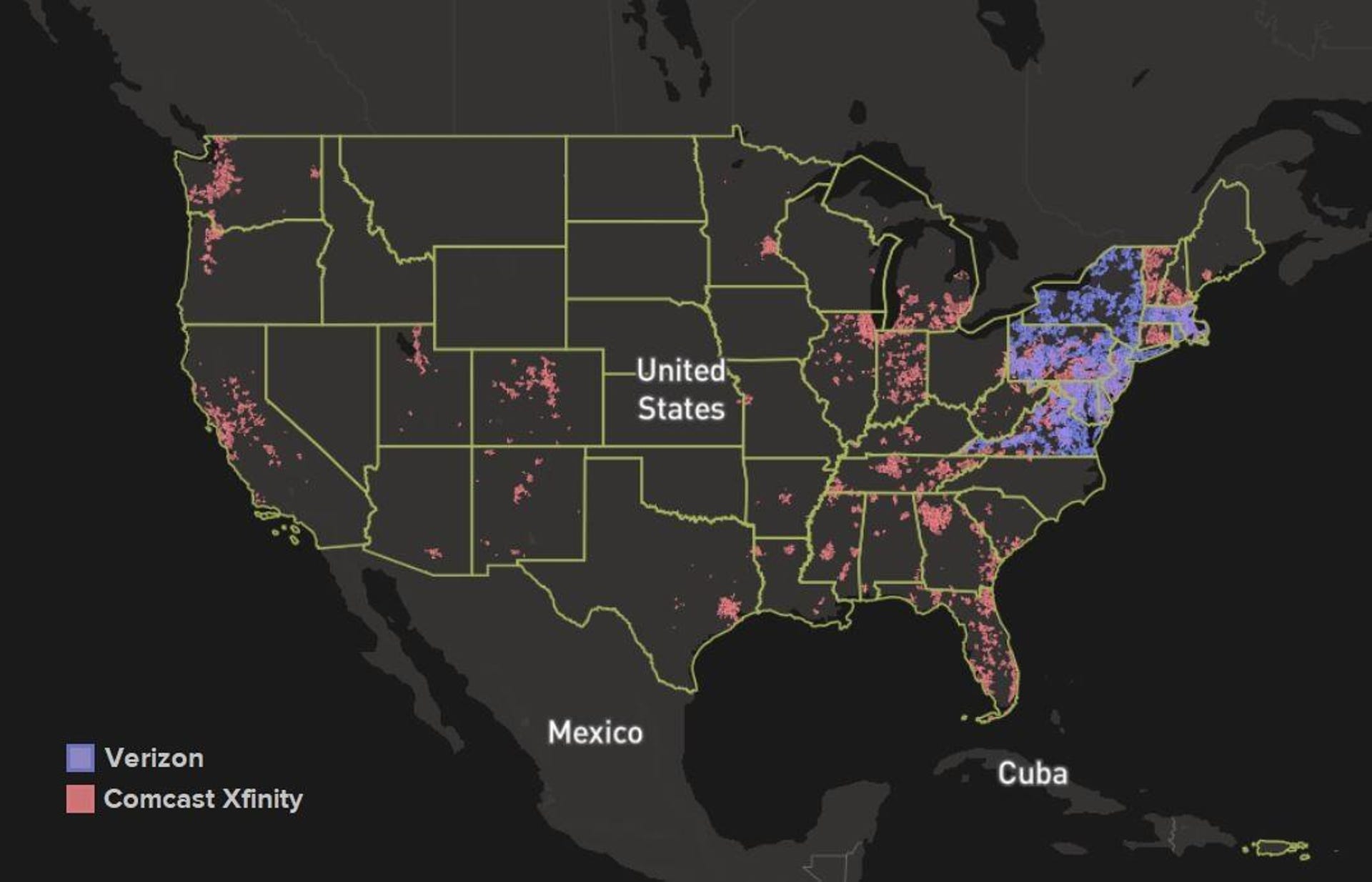
Verizon Fios coverage is concentrated in the Northeast, while Xfinity service is more widespread and available in several regions.
Xfinity wins the availability battle for its national coverage
According to the FCC’s coverage maps, Verizon Fios internet service is primarily available in the northeast US. Here’s a rundown of the major regions where the service is available:
- Delaware
- New Jersey
- New York City
- Albany, New York
- Buffalo, New York
- Long Island, New York
- Plattsburgh, New York
- Staten Island, New York
- Syracuse, New York
- Baltimore, Maryland
- Salisbury, Maryland
- Boston, Massachusetts
- Harrisburg, Pennsylvania
- Philadelphia, Pennsylvania
- Pittsburgh, Pennsylvania
- Providence, Rhode Island
- Norfolk, Virginia
- Richmond, Virginia
- Washington, DC
Comcast offers Xfinity internet service in New England, as well, including in Boston, Hartford and parts of New York. With a total claim of 28.3 million residential customers, the sprawling service is also available in numerous other regions throughout the country, including Chicago, Atlanta and the Pacific Northwest.
All told, you’ll find Comcast Xfinity available in 40 different states, whereas wired internet from Verizon is available in nine states, with fixed wireless connections over 5G and 4G LTE airwaves available elsewhere.
Verizon Fios vs. Xfinity: Plans and pricing
Both Verizon and Xfinity offer a variety of home internet plans, as well as bundles that package your home internet with other services like mobile or cable TV. You’ll find a greater variety of options with Xfinity, which offers twice as many plans as Verizon Fios.
The two providers are comparably priced at the high end, with gigabit or near-gigabit speed plans typically running for about $70-$90 per month. Comcast also offers a Gigabit Pro plan that offers fiber-to-the-home speeds of 6Gbps, both download and upload. Though it’s available in all Xfinity service areas, the company says, that plan requires a site inspection to confirm serviceability, and it costs $300 per month plus installation and fees.
At the low end, both providers offer 300-400Mbps plans at about $40 to $50 per month, though Xfinity also offers speeds of 200Mbps for as low as $25 per month. Meanwhile, Verizon’s DSL service offers single-digit speeds for about $40 per month.
Both providers offer discounted rates for low-income households
With Verizon, the Fios Forward program lets qualified customers deduct $20 from the monthly cost of any Verizon Fios plan. That brings the cost of a 300Mbps fiber internet plan down to $30 per month, and the cost of a 940Mbps plan down to $70 per month.
With Comcast, low-income customers can sign up for the Internet Essentials plan, which offers speeds of 50Mbps for $10 per month. Xfinity also features an Internet Essentials Plus plan, which doubles the download speed to 100Mbps for $30 a month.
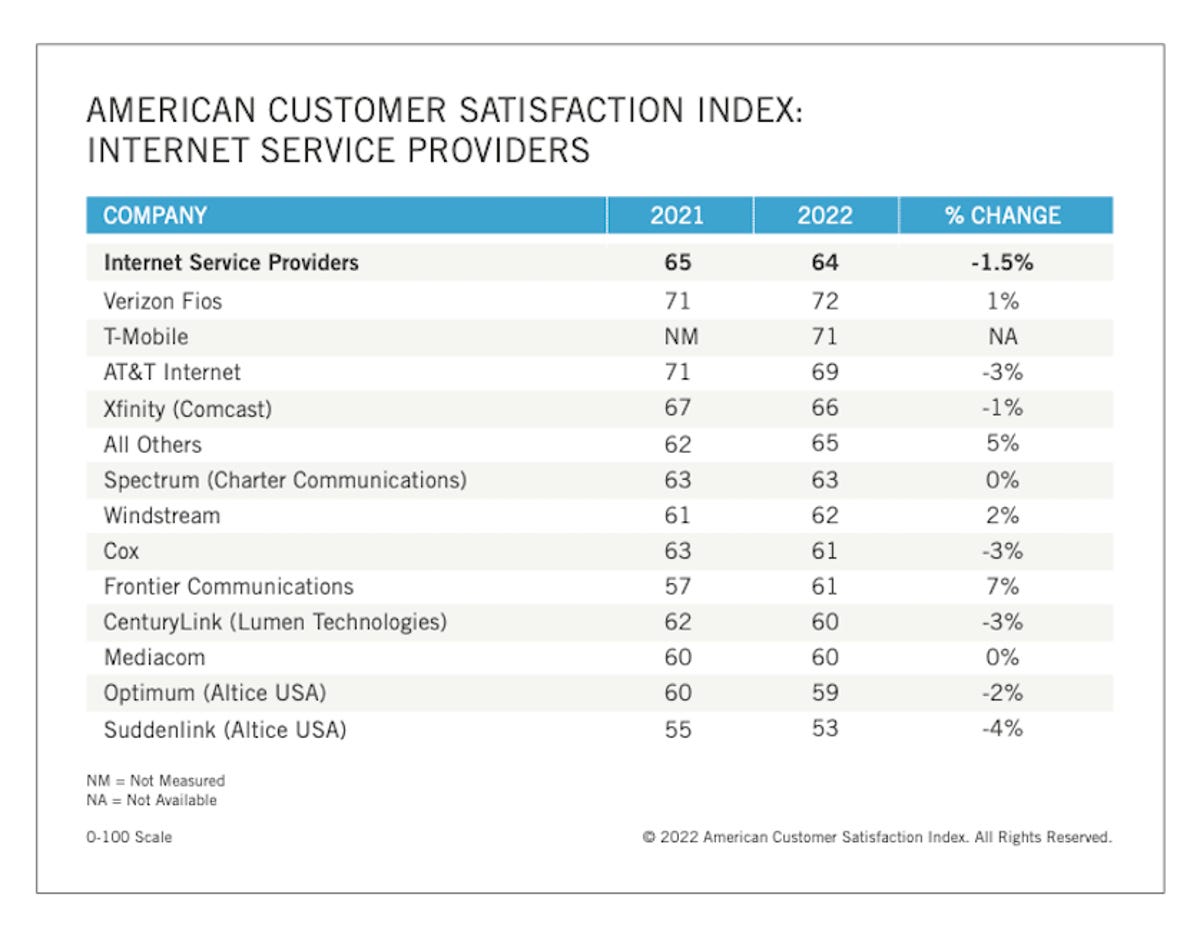
Enlarge Image
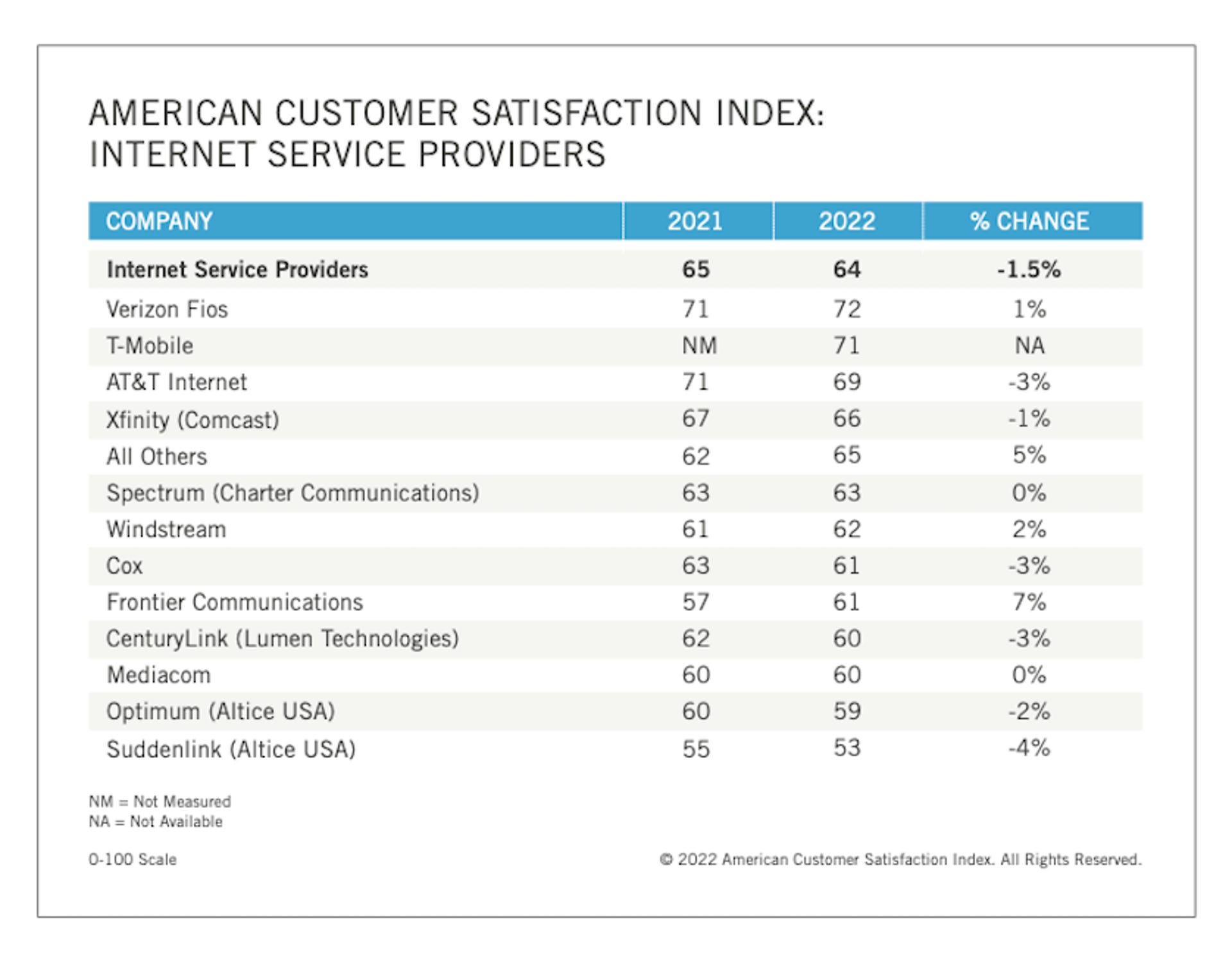
Verizon Fios was at the top for all internet service providers, with a satisfaction score of 72 out of 100. Xfinity came in at 66, two points higher than the industry average.
Verizon Fios consistently ranks highest in customer satisfaction
Something else worth considering if you’re comparing Xfinity and Verizon Fios is how happy their existing customers are with the services. It’s a metric that the American Customer Satisfaction Index tracks with yearly surveys and reports, including a regular look at the top telecom providers.
For 2022, Verizon was at the top of all of the major internet service providers with a satisfaction score of 72 out of 100, eight points higher than the overall ISP satisfaction grade of 64. That marks seven consecutive years of ranking in the 70s for customer satisfaction in the ACSI poll — the only ISP able to make that claim.
Comcast Xfinity finished with an above-average score, too, but at 66 out of 100, only just barely. Still, the report notes that Xfinity’s 2022 score, though down 1% from the previous year, marked its third straight year above the industry average. It’s a good sign that Comcast is moving in the right direction.
Comcast Xfinity vs. Verizon Fios recap
Price range $20 – $300 per monthSpeed range 75 – 6,000MbpsConnection CableHighlights Lots of plan options, solid customer satisfaction numbers, data caps on some plans
Xfinity gives you more plan options than just about any other provider, with speed tiers ranging from 200Mbps to 6Gbps. While availability on the 6Gbps plan is highly limited (and comes with a hefty price tag of $300 per month), the standard gigabit plan is available in 99% of Xfinity service areas. It offers max download speeds of up to 1,200Mbps. Unfortunately, since Xfinity uses a cable connection, upload speeds on all plans under 6Gbps won’t match the fast download speeds, so expect upload speeds in the 10 to 35Mbps range.
Excluding the pricey 6Gbps plan, Xfinity plans are competitively priced, at least during the two-year promotional period. After that point, plans are subject to a price increase that could add $20 to $40 or more to your monthly bill.
Price range $50 – $120 per monthSpeed range 300 – 2,000MbpsConnection FiberHighlights Unlimited data, no contracts, free equipment with gig service
Verizon Fios comes with fewer plan options than Xfinity, but each plan offers plenty of speed with 300Mbps, 500Mbps and gigabit speed tiers available. And since Verizon Fios employs a 100% fiber connection, customers can expect symmetrical or near-symmetrical upload and download speeds. Pricing is about the same as Xfinity for comparable speed tiers but without the definite and potentially steep price increase after a promo period ends.
Fast, reliable speeds and competitive pricing have landed Verizon Fios the top spots in customer satisfaction from the American Customer Satisfaction Index and J.D. Power in recent years. The ACSI awarded Verizon Fios the top score for seven years running. Verizon Fios also fared well with J.D. Power in 2022 with a score of 758/1,000, earning the top spot for providers in the East region.

